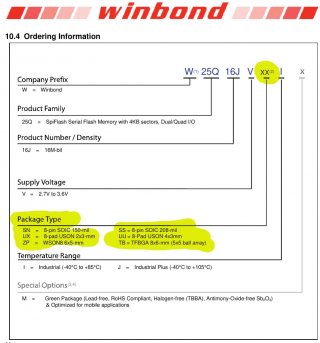Hello All!
Thank you for the support on my last query! I was looking at getting the SPI flash chip 'W25Q16JVUXIM' and on Mouser it is not recommend for new designs. I was wondering if there are any SPI flash chips that would be a good replacement or would any SPI chip work? I was looking at this SPI chip from Adafruit: LINK (this one is nice since it comes on a handy breakout board that I can tinker with).
Any help is greatly appreciated!
Thank you for the support on my last query! I was looking at getting the SPI flash chip 'W25Q16JVUXIM' and on Mouser it is not recommend for new designs. I was wondering if there are any SPI flash chips that would be a good replacement or would any SPI chip work? I was looking at this SPI chip from Adafruit: LINK (this one is nice since it comes on a handy breakout board that I can tinker with).
Any help is greatly appreciated!


